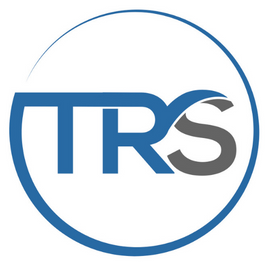Climbing the Ladder: Applying Maslow’s Hierarchy to Blue-Collar Workforce Engagement
By Laura Privitelli, Recruitment Consultant at TRS Resourcing In my years of recruitment, I’ve noticed something: companies that truly succeed are those that understand what motivates their people beyond just a pay check. This is where Maslow’s Hierarchy of Needs offers well known perceptions for employers looking to build and retain high-performing teams. Understanding the…
By Laura Privitelli, Recruitment Consultant at TRS Resourcing
In my years of recruitment, I’ve noticed something: companies that truly succeed are those that understand what motivates their people beyond just a pay check.
This is where Maslow’s Hierarchy of Needs offers well known perceptions for employers looking to build and retain high-performing teams.
Understanding the Hierarchy in Today’s Workplace
Abraham Maslow’s theory, developed in the 1940s, remains surprisingly relevant in today’s workplaces. The five-tier model suggests that people are motivated to fulfill basic needs before advancing to more complex ones; physiological, safety, belonging, esteem, and finally, self-actualisation.
Creating environments where staff can truly excel is the key to succeed. Let me break down how this applies to the blue-collar workforce from where I see.
Level 1: Physiological Needs – Building the Foundation
Through speaking with candidates, I hear that the compensation is just the beginning. For workers in physically demanding roles, proper breaks, comfortable facilities, and reasonable working hours are essentials.
I’ve observed companies transform their retention rates by applying simple but effective changes: comfortable break areas, quality refreshment facilities, and flexible shifts that acknowledge family commitments. These basics create the foundation for everything else to follow.
Level 2: Safety Needs – Creating Security in the Workplace
In blue-collar environments where physical safety is often a priority, addressing safety needs comes first. Beyond the obvious physical safety protocols, today’s workers are increasingly seeking job security, stable hours, and clear expectations.
Companies that are top in this area offer clear career advancement, winning contracts, and comprehensive training. When I interview their staff, the common theme is obvious: “I know where I stand here, and I know they’ve got my back.” This sense of security allows workers to focus on their jobs without worry.
Level 3: Social Needs – Building Teams, Not Just Workforces
Staff want to belong to teams where their expertise is valued and in collaboration with others.
I’ve seen companies transform their culture by applying collaborative projects, team-based problem-solving sessions, and regular social events that include families. The result? When seeking candidates for these companies, word-of-mouth referrals from existing employees become the best source.
As one team leader told me: “We used to have separate groups that rarely interacted. Now everyone works together, sharing ideas and solving problems as a unit. It’s changed everything about how we operate.”
Level 4: Esteem Needs – Recognition in a Hands-On World
For those who take pride in their skills, recognition isn’t about superficial praise; it’s about acknowledging expertise, experience, and results. In my conversations with candidates, being respected for their technical knowledge consistently ranks as a top priority.
Forward-thinking employers apply recognition programs where team members can gain acknowledgment for specialised skills. These sometimes include mentoring opportunities were experienced staff train newcomers, creating a culture of respect. Their retention of top talent becomes the envy of their competitors.
Level 5: Self-Actualisation – From Job to Career to Calling
For any employer creating an environment where employees can reach their full potential is so important. For staff this often means opportunities to innovate, lead, and make meaningful contributions to the business.
I’ve worked with companies that have changed their approach by involving frontline workers in planning and decision-making. They’ve made pathways for skilled workers to move into specialised roles or management positions. What’s notable is how this approach attracts a diverse workforce bringing fresh perspectives to traditional fields.
As one supervisor who started in an entry-level position shared: “I never thought I’d be designing new systems and managing teams when I started out. They saw something in me I didn’t see in myself.”
Putting It Into Practice: The TRS Approach
At TRS Resourcing, we’ve seen firsthand how companies that address these hierarchical needs outperform their competitors in attracting and retaining top talent. When connecting candidates with clients, we look beyond skill matches to find cultural environments where people can truly thrive.
For businesses looking to improve their employee engagement, I recommend starting with an honest assessment:
• Are you meeting the basic needs of your workforce consistently?
• Do your people feel genuinely secure, both physically and in their position?
• Have you created a culture where belonging and teamwork show?
• Does your recognition system genuinely value the contributions of all staff?
• Are there clear pathways for people to grow, develop, and reach their potential?
Skilled staff are increasingly selective about where they apply their talents and by understanding and addressing these needs, you’re not just filling positions, you’re building a workforce that’s engaged, loyal, and motivated to shine.
I’d love to hear your experiences with workforce engagement. What approaches have worked for your team? Connect with me (Laura) at TRS Resourcing to continue the conversation
Skilled Trades in Crisis or Demand? How Smart Recruitment Is Powering Business Growth
Climbing the Ladder: Applying Maslow’s Hierarchy to Blue-Collar Workforce Engagement
Building Australia’s Future: The Rise of Skilled Trades and the Role of Specialist Recruiters

